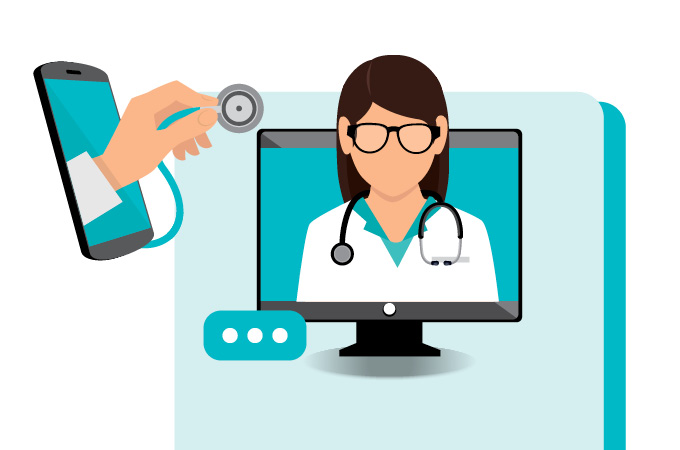If you’ve ever scheduled a telehealth appointment to see a provider about a minor illness or injury, you know how convenient it can be. A simple video call eliminates the stress of traffic, busy waiting rooms and exposure to other people’s germs, and you can speak with a doctor or nurse practitioner from the comfort and privacy of your home. Especially in the current sensitive climate, telehealth is becoming even more widespread and advanced to serve patients better.
Dr. Tim Johnson, system vice president of medical group and population health operations and an internal medicine physician with SSM Health, says most medical providers now have access to videoconference technology. “In the beginning, some health systems acknowledged that younger patients especially were showing an interest in telehealth, but other systems were less than enthusiastic about it,” he says. “Those of us who have been in practice for a while have been trained to help patients in person, and it’s not always easy to switch your thinking. But the COVID-19 outbreak changed that landscape, and providers realized video was the only completely safe way to connect with patients in a situation like this. People of all ages have begun to embrace it, and I’m certain it is here to stay.”
Johnson says a lot can be accomplished through a telehealth visit. “Patients with conditions like acid reflux or headaches can talk to a doctor about symptoms and have a prescription sent to the pharmacy,” he notes. “Those with high blood pressure can check it at home and talk about results with the doctor. Cholesterol and thyroid issues can be discussed, and so can minor injuries like cuts and scrapes. Telehealth is also ideal for skin conditions and consultations about mental health issues like depression and anxiety.”
Obviously, there are conditions for which telehealth isn’t a fit. “If you have diabetes, for example, the doctor can discuss blood pressure and sugar control during a remote visit, but you need to go to the office for things like a diabetic foot exam,” Johnson says. “If you have serious pain or symptoms that may signal a blockage or a mass, or if there are any potential surgical issues, you must be seen in person.” And if you suspect you may have COVID-19, you should speak with your doctor about where you can be evaluated safely.
According to Johnson, new advancements will make telehealth visits even more convenient in the future. Examples include a system that allows doctors to evaluate heart rhythms remotely through chest sensors connected to a smartphone. “So far, primary care physicians have embraced telehealth technology the most, but specialists like cardiologists and neurologists also are getting on board,” Johnson says. “We’ll definitely see it become more common and consumer-friendly. Patients can feel confident they are getting high quality care with a personal connection.”
Johnson adds that telehealth has the potential to improve population health by making it easier to access care. “People often avoid going to a doctor because they are too busy or it’s too much of a hassle to get time off work,” he notes. “They are more likely to embrace a 20-minute lunchtime video visit with a practitioner who can meet their needs efficiently. Telehealth removes barriers, and that definitely can improve people’s lives.”
let’s chat
J.C. Ramey, CEO of Florida-based digital solutions firm DeviceBits, says chatbot technology is gaining a prominent role in remote health care these days. (If you’ve never used a chatbot before, it’s an instant messaging tool that allows users to get answers to questions and concerns in real time online.)
Ramey says the idea works well for health-related organizations like insurers and physician groups. It automates conversations and quickly retrieves answers to questions so patients don’t have to sit on hold or wait for a return phone call. For example, if you’re searching for a new doctor, the system can use the information you enter (age, gender, location, language) to suggest an appropriate provider.
A chatbot can connect patients to a live agent or a database of relevant information, and safeguards can be built in to protect privacy. “The technology saves patients a lot of time and hassle,” Ramey explains. “Especially during high-traffic times like open insurance enrollment periods, they can get instant answers to their questions and needs. People are becoming more conscious of their health and want to be their own advocates, and technology can help with that.”








